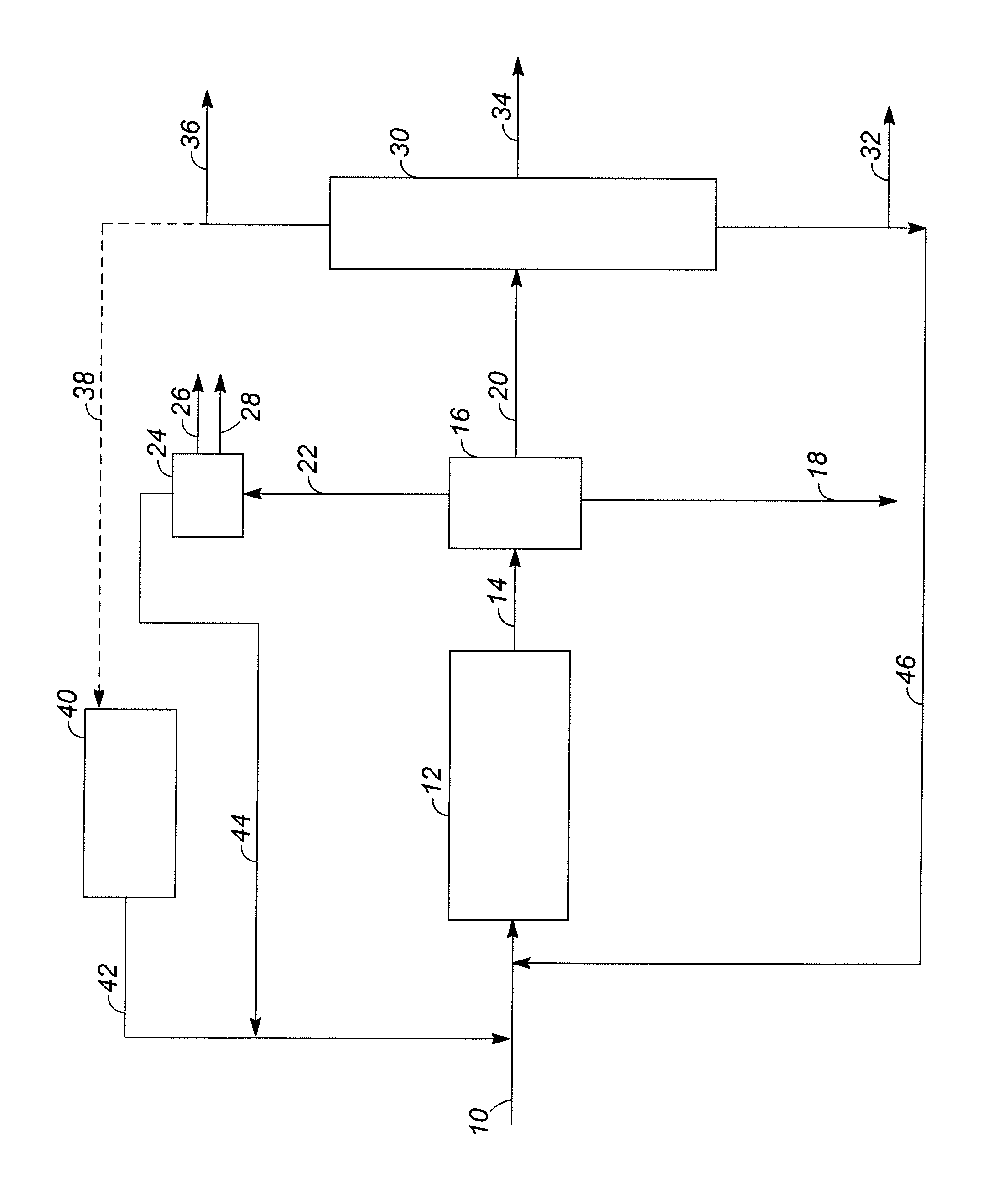Production of Aviation Fuel from Renewable Feedstocks
a technology of renewable feedstocks and aviation fuel, applied in the direction of hydrocarbon oil cracking, hydrocarbon oil treatment products, fuels, etc., can solve the problem of not meeting the specifications of aviation fuel, and achieve the effect of reducing the severity of hydrocracking and increasing the solubility of hydrogen in the reaction mixtur
- Summary
- Abstract
- Description
- Claims
- Application Information
AI Technical Summary
Benefits of technology
Problems solved by technology
Method used
Image
Examples
example 1
[0047]Deoxygenation, hydrogenation, selective hydrocracking, and isomerization of refined-bleached-deodorized (RBD) soybean oil over several different multifunctional catalysts was accomplished by flowing the RBD soybean oil down over the catalyst in a tubular furnace at a controlled temperature, pressure, space velocity, and H2 / feed ratio. Each experiment was run at nearly complete deoxygenation and hydrogenation of the soybean oil with a portion of the n-paraffins selectively hydrocracked to produce jet range paraffins having approximately about 9 to about 18 carbon atoms. The deoxygenation products included CO, CO2, H2O, and propane; sulfur was removed as H2S. Other side products of the selective hydrocracking function include gas phase light products and light liquid phase paraffins.
TABLE 1CatalystABCTemperature (C.)300 300 350 Pressure (psig)800 500 500 LHSV, h-10.30.90.9H2 / feed (scf / bbl)9000 4000 4500 Liquid yield91% 90% 71% Jet range yield24% 16% 5%iso / n jet range...
example 2
[0048]Deoxygenation, hydrogenation, selective hydrocracking, and isomerization of refined-bleached-deodorized (RBD) soybean oil over two different multifunctional catalysts in series was accomplished by flowing the RBD soybean oil down over two different catalysts in series (catalyst 1 and catalyst 2) in a tubular furnace at a controlled temperature, pressure, space velocity, and H2 / feed ratio. The experiment was run at nearly complete deoxygenation and hydrogenation of the soybean oil with a portion of the n-paraffins selectively hydrocracked to produce jet range paraffins having approximately about 9 to about 18 carbon atoms. The deoxygenation products included CO, CO2, H2O, and propane; sulfur was removed as H2S. Other side products of the selective hydrocracking function include gas phase light products and light liquid phase paraffins. Table 2 summarizes reactor operating conditions and reactor effluent yields as wt.-% of soybean oil feedstock processed.
TABLE 2Temperature (° C....
PUM
| Property | Measurement | Unit |
|---|---|---|
| paraffin carbon number | aaaaa | aaaaa |
| boiling points | aaaaa | aaaaa |
| boiling points | aaaaa | aaaaa |
Abstract
Description
Claims
Application Information
 Login to View More
Login to View More - R&D
- Intellectual Property
- Life Sciences
- Materials
- Tech Scout
- Unparalleled Data Quality
- Higher Quality Content
- 60% Fewer Hallucinations
Browse by: Latest US Patents, China's latest patents, Technical Efficacy Thesaurus, Application Domain, Technology Topic, Popular Technical Reports.
© 2025 PatSnap. All rights reserved.Legal|Privacy policy|Modern Slavery Act Transparency Statement|Sitemap|About US| Contact US: help@patsnap.com

